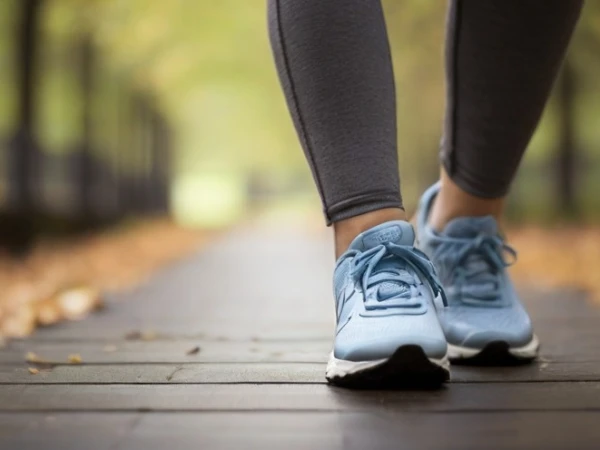سوشل میڈیا پر ایک دعویٰ تیزی سے وائرل ہو رہا ہے جس میں کہا گیا ہے کہ اسلام آباد انٹرنیشنل ایئرپورٹ پر چھ ماہ تک غیر دعویٰ شدہ رہنے والا سامان صرف 560 روپے میں خریدا جاسکتا ہے، بشرطیکہ لوگ آن لائن فراہم کردہ لنک پر رجسٹریشن کریں۔ تاہم حقائق کی جانچ سے یہ بات سامنے آئی ہے کہ یہ دعویٰ مکمل طور پر جھوٹاقرأ المزيد

سوشل میڈیا پر ایک دعویٰ تیزی سے وائرل ہو رہا ہے جس میں کہا گیا ہے کہ اسلام آباد انٹرنیشنل ایئرپورٹ پر چھ ماہ تک غیر دعویٰ شدہ رہنے والا سامان صرف 560 روپے میں خریدا جاسکتا ہے، بشرطیکہ لوگ آن لائن فراہم کردہ لنک پر رجسٹریشن کریں۔
تاہم حقائق کی جانچ سے یہ بات سامنے آئی ہے کہ یہ دعویٰ مکمل طور پر جھوٹ پر مبنی ہے۔
یہ دعویٰ سب سے پہلے ’’ایئرپورٹ اناؤنسمنٹس/ISB‘‘ نامی فیس بک پیج پر 20 جون کو شیئر کیا گیا۔ اس پوسٹ میں کہا گیا کہ ہر سال ایئرپورٹ پر درجنوں سوٹ کیس بغیر کسی دعوے کے رہ جاتے ہیں اور پالیسی کے مطابق اگر چھ ماہ تک کوئی دعویٰ نہ کیا جائے تو یہ بیگز عوام کو محض 560 روپے فی بیگ کے حساب سے دیے جاسکتے ہیں۔
اس کے ساتھ لوگوں کو ایک ویب سائٹ پر رجسٹریشن کی دعوت بھی دی گئی تھی۔ یہ پوسٹ مختلف واٹس ایپ گروپوں میں بھی گردش کررہی ہے۔
لیکن فیکٹ چیک کے دوران یہ بات سامنے آئی ہے کہ ایئرپورٹ پر لاوارث سامان بیچے جانے کا یہ دعویٰ جعلی ہے اور اتھارٹی اس دعوے کو باضابطہ طور پر مسترد کرچکی ہے۔ اس حوالے سے 20 اپریل کو پاکستان ایئرپورٹس اتھارٹی کے سرکاری فیس بک پیج پر ’’فیک نیوز الرٹ‘‘ کے عنوان سے ایک پوسٹ بھی جاری کی گئی جس میں کہا گیا کہ اسلام آباد انٹرنیشنل ایئرپورٹ پر گمشدہ سامان کی فروخت کے حوالے سے سوشل میڈیا پر پھیلائی جانے والی معلومات سراسر جھوٹی اور گمراہ کن ہیں۔
ایئرپورٹ انتظامیہ نے ایسی کوئی پالیسی متعارف نہیں کرائی، اور سوشل میڈیا پر گردش کرنے والا یہ دعویٰ جھوٹا ہے۔ مزید برآں، جس ویب سائٹ کا لنک اس پوسٹ میں دیا گیا، وہ بھی کھلنے کے قابل نہیں ہے۔
لہٰذا، یہ واضح ہوچکا ہے کہ اسلام آباد انٹرنیشنل ایئرپورٹ پر 560 روپے میں غیر دعویٰ شدہ سامان فروخت کیے جانے کی خبر بے بنیاد اور گمراہ کن ہے، اور ایئرپورٹ انتظامیہ نے عوام سے اپیل کی ہے کہ اس طرح کے جھوٹے دعوؤں پر یقین کرنے سے گریز کریں۔
قراءة أقل









سوشل میڈیا اور واٹس ایپ پر ان دنوں ایک خبر تیزی سے وائرل ہو رہی ہے جس میں دعویٰ کیا گیا ہے کہ اسٹیٹ بینک آف پاکستان (SBP) نے 2025 کے آخر تک 10، 20، 50، 100، 500، 1000 اور 5000 روپے کے نئے ڈیزائن کے کرنسی نوٹس جاری کرنے کا اعلان کیا ہے۔ فیکٹ چیک کے بعد یہ بات واضح ہوئی ہے کہ یہ خبر بالکل جعلی ہے اوراقرأ المزيد
سوشل میڈیا اور واٹس ایپ پر ان دنوں ایک خبر تیزی سے وائرل ہو رہی ہے جس میں دعویٰ کیا گیا ہے کہ اسٹیٹ بینک آف پاکستان (SBP) نے 2025 کے آخر تک 10، 20، 50، 100، 500، 1000 اور 5000 روپے کے نئے ڈیزائن کے کرنسی نوٹس جاری کرنے کا اعلان کیا ہے۔
فیکٹ چیک کے بعد یہ بات واضح ہوئی ہے کہ یہ خبر بالکل جعلی ہے اور اسٹیٹ بینک نے اس کی سختی سے تردید کی ہے۔
وائرل ہونے والے آرٹیکل میں کہا گیا کہ نئے نوٹس میں:
وائرل پوسٹ میں یہ دعویٰ بھی کیا گیا کہ 2024 میں خفیہ آرٹ مقابلہ کروا کر یہ ڈیزائن منتخب کیے گئے۔ لیکن ان تمام دعوؤں کو اسٹیٹ بینک نے مسترد کیا ہے۔
اسٹیٹ بینک کے ترجمان کا کہنا ہے کہ ’’ہمارے پاس 2025 میں کرنسی نوٹس کے ڈیزائن تبدیل کرنے یا پولیمر نوٹس کے تجربے کا کوئی منصوبہ نہیں۔ جو نوٹ 2005 سے 2008 کے درمیان متعارف ہوئے، وہی اس وقت بھی قابل استعمال ہیں اور آئندہ بھی جاری رہیں گے۔‘‘
اسٹیٹ بینک نے یہ بھی واضح کیا کہ نہ تو علامہ اقبال کی شاعری کندہ کرنے کا کوئی منصوبہ ہے، نہ ہی چمکنے والے نقشے شامل کیے جارہے ہیں۔
یہ خبر جعلی کیوں ہے؟
کوئی مستند ذریعہ نہیں: وائرل آرٹیکل میں “اسٹیٹ بینک ذرائع” جیسے جعلی نام دیے گئے، جبکہ اسٹیٹ بینک کی ویب سائٹ یا آفیشل ٹوئٹر/X اکاؤنٹ پر اس بارے میں کچھ نہیں کہا گیا۔
فرضی کہانیاں: 10 لاکھ روپے انعام کے ساتھ ملک گیر آرٹ مقابلے کا دعویٰ بھی جھوٹا ہے۔
کلیکٹر مارکیٹ کا فریب: یہ کہنا کہ نئے نوٹ 50 ہزار سے 1 لاکھ روپے میں فروخت ہوں گے، بے بنیاد ہے۔
غلط ٹیکنالوجی کے دعوے: اسٹیٹ بینک نے ایسی کسی ہائی ٹیک مواد کے استعمال کا اعلان نہیں کیا جو دنیا کی کرنسی میں بھی کم استعمال ہوتی ہے۔
اصل حقیقت کیا ہے؟
اسٹیٹ بینک کرنسی نوٹوں کی سیکیورٹی کا وقتاً فوقتاً جائزہ لیتا رہتا ہے، تاہم اس وقت نوٹوں کے ڈیزائن میں تبدیلی کا کوئی منصوبہ نہیں۔ آخری بار 2019 میں 1000 روپے کے نوٹ میں سیکیورٹی فیچر اپڈیٹ کیا گیا تھا۔ اگر آئندہ کوئی تبدیلی کی جائے گی تو اسٹیٹ بینک کم از کم 12 سے 18 ماہ پہلے باضابطہ اعلان کرے گا۔
جعلی خبر کا نقصان کیا ہوا؟
اسٹیٹ بینک نے خبردار کیا کہ ایسی افواہیں فراڈ اور مالی نقصان کا باعث بن سکتی ہیں۔ کرنسی کی قیمت میں 25-30 فیصد سالانہ اضافے کا دعویٰ بھی لوگوں کو گمراہ کر رہا ہے۔
اسٹیٹ بینک نے سائبر حکام کے ساتھ مل کر اس جعلی خبر کے پھیلانے والوں کا پتا لگانے کا عمل شروع کردیا ہے۔ اس وقت آپ کے موجودہ کرنسی نوٹ مکمل طور پر قابل استعمال ہیں اور 2025 میں نئے ڈیزائن کے نوٹس جاری کرنے کی کوئی حقیقت نہیں۔
قراءة أقل